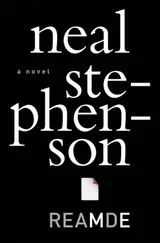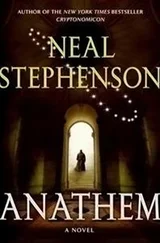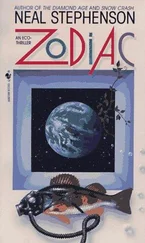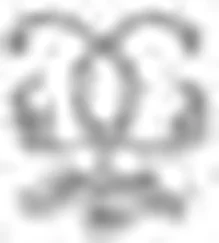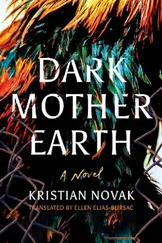Neal Stephenson - Mother Earth Mother Board
Здесь есть возможность читать онлайн «Neal Stephenson - Mother Earth Mother Board» весь текст электронной книги совершенно бесплатно (целиком полную версию без сокращений). В некоторых случаях можно слушать аудио, скачать через торрент в формате fb2 и присутствует краткое содержание. Жанр: Фантастика и фэнтези, на английском языке. Описание произведения, (предисловие) а так же отзывы посетителей доступны на портале библиотеки ЛибКат.
- Название:Mother Earth Mother Board
- Автор:
- Жанр:
- Год:неизвестен
- ISBN:нет данных
- Рейтинг книги:5 / 5. Голосов: 1
-
Избранное:Добавить в избранное
- Отзывы:
-
Ваша оценка:
- 100
- 1
- 2
- 3
- 4
- 5
Mother Earth Mother Board: краткое содержание, описание и аннотация
Предлагаем к чтению аннотацию, описание, краткое содержание или предисловие (зависит от того, что написал сам автор книги «Mother Earth Mother Board»). Если вы не нашли необходимую информацию о книге — напишите в комментариях, мы постараемся отыскать её.
Mother Earth Mother Board — читать онлайн бесплатно полную книгу (весь текст) целиком
Ниже представлен текст книги, разбитый по страницам. Система сохранения места последней прочитанной страницы, позволяет с удобством читать онлайн бесплатно книгу «Mother Earth Mother Board», без необходимости каждый раз заново искать на чём Вы остановились. Поставьте закладку, и сможете в любой момент перейти на страницу, на которой закончили чтение.
Интервал:
Закладка:
Neal Stephenson
Mother Earth Mother Board
In which the hacker tourist ventures forth across the wide and wondrous meatspace of three continents, acquainting himself with the customs and dialects of the exotic Manhole Villagers of Thailand, the U-Turn Tunnelers of the Nile Delta, the Cable Nomads of Lan tao Island, the Slack Control Wizards of Chelmsford, the Subterranean Ex-Telegraphers of Cornwall, and other previously unknown and unchronicled folk; also, biographical sketches of the two long-dead Supreme Ninja Hacker Mage Lords of global telecommunications, and other material pertaining to the business and technology of Undersea Fiber-Optic Cables, as well as an account of the laying of the longest wire on Earth, which should not be without interest to the readers of Wired.
Information moves, or we move to it. Moving to it has rarely been popular and is growing unfashionable; nowadays we demand that the information come to us. This can be accomplished in three basic ways: moving physical media around, broadcasting radiation through space, and sending signals through wires. This article is about what will, for a short time anyway, be the biggest and best wire ever made.
Wires warp cyberspace in the same way wormholes warp physical space: the two points at opposite ends of a wire are, for informational purposes, the same point, even if they are on opposite sides of the planet. The cyberspace-warping power of wires, therefore, changes the geometry of the world of commerce and politics and ideas that we live in. The financial districts of New York, London, and Tokyo, linked by thousands of wires, are much closer to each other than, say, the Bronx is to Manhattan.
Today this is all quite familiar, but in the 19th century, when the first feeble bits struggled down the first undersea cable joining the Old World to the New, it must have made people's hair stand up on end in more than just the purely electrical sense - it must have seemed supernatural. Perhaps this sort of feeling explains why when Samuel Morse stretched a wire between Washington and Baltimore in 1844, the first message he sent with his code was "What hath God wrought!" - almost as if he needed to reassure himself and others that God, and not the Devil, was behind it.
During the decades after Morse's "What hath God wrought!" a plethora of different codes, signalling techniques, and sending and receiving machines were patented. A web of wires was spun across every modern city on the globe, and longer wires were strung between cities. Some of the early technologies were, in retrospect, flaky: one early inventor wanted to use 26-wire cables, one wire for each letter of the alphabet. But it quickly became evident that it was best to keep the number of individual wires as low as possible and find clever ways to fit more information onto them.
This requires more ingenuity than you might think - wires have never been perfectly transparent carriers of data; they have always degraded the information put into them. In general, this gets worse as the wire gets longer, and so as the early telegraph networks spanned greater distances, the people building them had to edge away from the seat-of-the-pants engineering practices that, applied in another field, gave us so many boiler explosions, and toward the more scientific approach that is the standard of practice today.
Still, telegraphy, like many other forms of engineering, retained a certain barnyard, improvised quality until the Year of Our Lord 1858, when the terrifyingly high financial stakes and shockingly formidable technical challenges of the first transatlantic submarine cable brought certain long-simmering conflicts to a rolling boil, incarnated the old and new approaches in the persons of Dr. Wildman Whitehouse and Professor William Thomson, respectively, and brought the conflict between them into the highest possible relief in the form of an inquiry and a scandal that rocked the Victorian world. Thomson came out on top, with a new title and name - Lord Kelvin.
Everything that has occurred in Silicon Valley in the last couple of decades also occurred in the 1850s. Anyone who thinks that wild-ass high tech venture capitalism is a late-20th-century California phenomenon needs to read about the maniacs who built the first transatlantic cable projects (I recommend Arthur C. Clarke's book How the World Was One). The only things that have changed since then are that the stakes have gotten smaller, the process more bureaucratized, and the personalities less interesting.
Those early cables were eventually made to work, albeit not without founding whole new fields of scientific inquiry and generating many lucrative patents. Undersea cables, and long-distance communications in general, became the highest of high tech, with many of the same connotations as rocket science or nuclear physics or brain surgery would acquire in later decades. Some countries and companies (the distinction between countries and companies is hazy in the telco world) became very good at it, and some didn't. AT&T acquired a dominance of the field that largely continues to this day and is only now being seriously challenged by a project called FLAG: the Fiberoptic Link Around the Globe.
In which the Hacker Tourist encounters: Penang, a microcosm of the Internet. Rubber, Penang's chief commodity, and its many uses: protecting wires from the elements and concupiscent wanderers from harmful DNA. Advantages of chastity, both for hacker tourists and for cable layers. Bizarre Spectaclesin the jungles of southern Thailand. FLAG, its origins and its enemies.
5° 241 24.932' N, 100° 241 19.748' E City of George Town, Island of Penang, Malaysia
FLAG, a fiber-optic cable now being built from England to Japan, is a skinny little cuss (about an inch in diameter), but it is 28,000 kilometers long, which is long even compared to really big things like the planet Earth. When it is finished in September 1997, it arguably will be the longest engineering project in history. Writing about it necessitates a lot of banging around through meatspace. Over the course of two months, photographer Alex Tehrani and I hit six countries and four continents trying to get a grip on this longest, fastest, mother of all wires. I took a GPS receiver with me so that I could have at least a general idea of where the hell we were. It gave me the above reading in front of a Chinese temple around the corner from the Shangri-La Hotel in Penang, Malaysia, which was only one of 100 peculiar spots around the globe where I suddenly pulled up short and asked myself, "What the hell am I doing here?"
You might well ask yourself the same question before diving into an article as long as this one. The answer is that we all depend heavily on wires, but we hardly ever think about them. Before learning about FLAG, I knew that data packets could get from America to Asia or the Middle East, but I had no idea how. I knew that it had something to do with wires across the bottom of the ocean, but I didn't know how many of those wires existed, how they got there, who controlled them, or how many bits they could carry.
According to legend, in 1876 the first sounds transmitted down a wire were Alexander Graham Bell saying "Mr. Watson, come here. I want you." Compared with Morse's "What hath God wrought!'' this is disappointingly banal - as if Neil Armstrong, setting foot on the moon, had uttered the words: "Buzz, could you toss me that rock hammer?'' It's as though during the 32 years following Morse's message, people had become inured to the amazing powers of wire.
Today, another 120 years later, we take wires completely for granted. This is most unwise. People who use the Internet (or for that matter, who make long-distance phone calls) but who don't know about wires are just like the millions of complacent motorists who pump gasoline into their cars without ever considering where it came from or how it found its way to the corner gas station. That works only until the political situation in the Middle East gets all screwed up, or an oil tanker runs aground on a wildlife refuge. In the same way, it behooves wired people to know a few things about wires - how they work, where they lie, who owns them, and what sorts of business deals and political machinations bring them into being.
Читать дальшеИнтервал:
Закладка:
Похожие книги на «Mother Earth Mother Board»
Представляем Вашему вниманию похожие книги на «Mother Earth Mother Board» списком для выбора. Мы отобрали схожую по названию и смыслу литературу в надежде предоставить читателям больше вариантов отыскать новые, интересные, ещё непрочитанные произведения.
Обсуждение, отзывы о книге «Mother Earth Mother Board» и просто собственные мнения читателей. Оставьте ваши комментарии, напишите, что Вы думаете о произведении, его смысле или главных героях. Укажите что конкретно понравилось, а что нет, и почему Вы так считаете.

